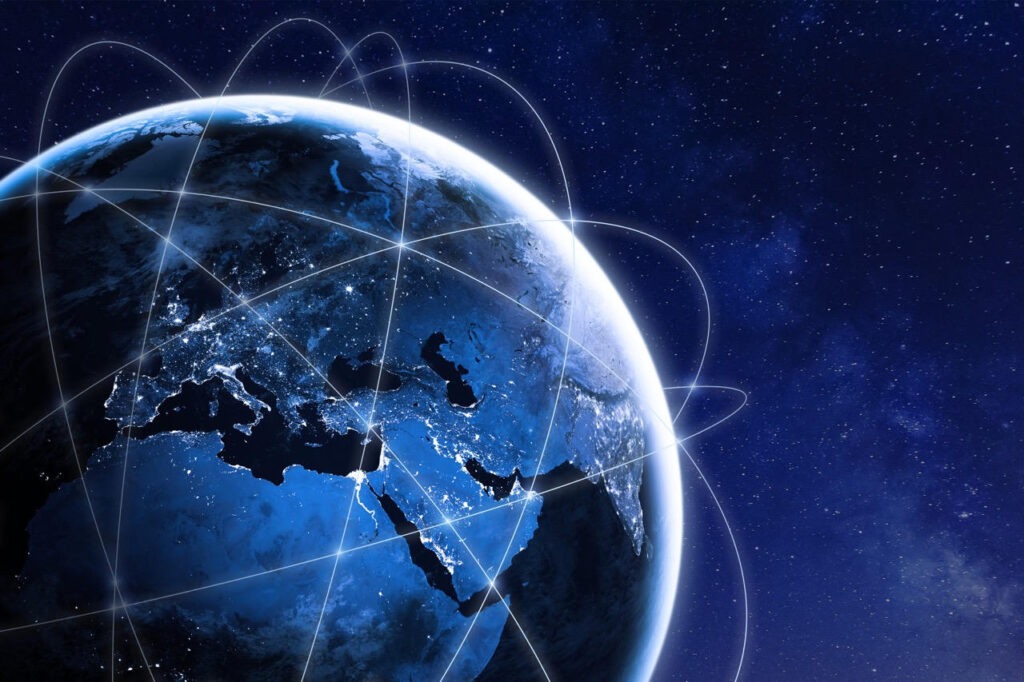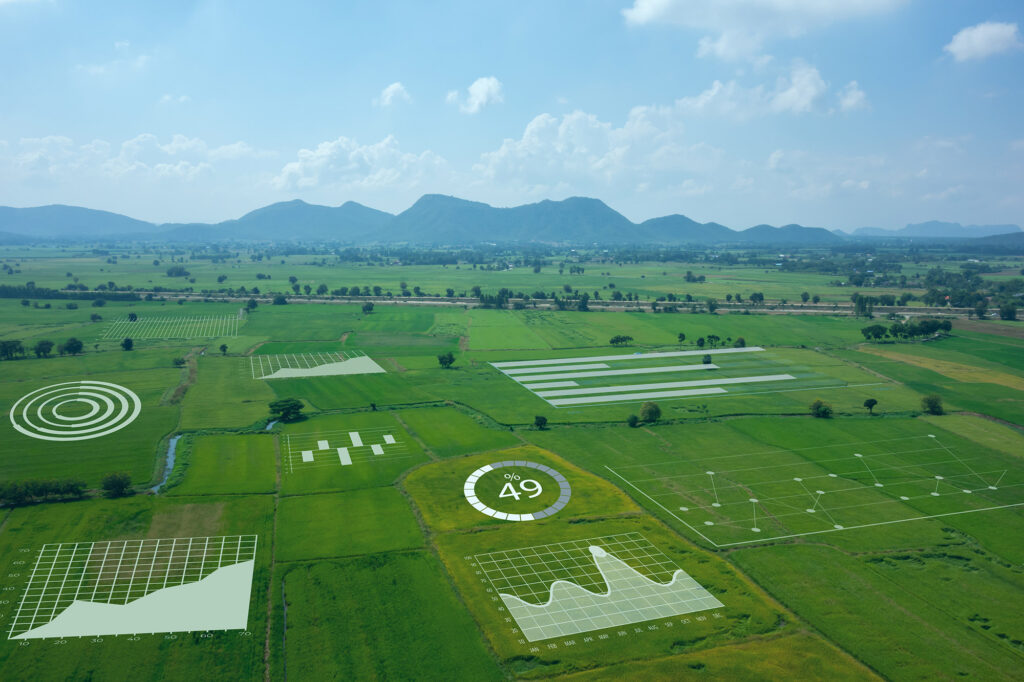Inmarsat announces FreeWave as partner for global IoT

May 18, 2023 The agreement will see enterprise customers gain operational advantages through proven, reliable satellite connectivity services. Inmarsat, a world leader in global, mobile satellite communications, has announced FreeWave Technologies – a leading Internet of Things (IoT) solutions provider – as a Distribution Partner for its L-band satellite IoT services. The partnership, signed at this week’s IoT Tech Expo in Santa Clara, California, will focus on the integration of Inmarsat’s IsatData Pro (IDP) service in FreeWave’s end-to-end IoT solutions, initially with standalone hardware terminals, with a view to integrating IDP core modules into IoT hardware and assets in the future. IDP is a two-way, real-time, non-IP messaging service that is used globally to connect mission-critical assets in remote locations where regular terrestrial connectivity is limited or non-existent. IDP is enabled by Inmarsat’s ELERA geostationary L-band satellite network, with ultra-reliable performance and robust network security. The agreement will provide FreeWave’s customers with reliable, cost-effective, and scalable connectivity solutions to meet their mission-critical IoT demands across global industries, including agriculture, oil and gas, and utilities. The new relationship will also support the IoT uses of businesses operating in the environmental tracking space – including earthquake and flooding monitoring firms. Jat Brainch, Steve Wulchin and Jeff Horton meet FreeWave at IoT Tech Expo in Santa Clara Jat Brainch, Chief Commercial and Digital Officer, Inmarsat, said: “We’re excited to be welcoming FreeWave as an Inmarsat Distribution Partner. FreeWave is an established name in the IoT market and we are looking forward to collaborating with them to build customer-centric solutions as we both look to grow our IoT footprint. “We are particularly focused on the positive sustainable outcomes we believe this partnership can provide FreeWave’s customers. After all, you cannot manage what you cannot measure, and we believe solutions that enable better automation and digitalization of the data capture process to collect granular, real-time results are increasingly essential to achieving our collective Net Zero goals in the future.” Jeff Horton, Chief Revenue Officer at FreeWave, said: “We are delighted to become an Inmarsat Distribution Partner. Inmarsat’s bi-directional IsatData Pro service is unique in the marketplace and perfectly suited to the needs of our customers. We look forward to working closely with the Inmarsat team over the coming months to grow our market share in the satellite IoT space.” “Sustainability is on the minds of all our clients. Now, being able to offer satellite connectivity that is suited for a myriad of applications will keep their remote devices providing the critical data they need to make better-informed business decisions. We are now able to give them trusted connectivity from Inmarsat that complements our comprehensive offer from data collection to a data platform serving data-driven insights for enhanced decision-making. We are truly excited for what’s still to come from this partnership.” Further information About Inmarsat Inmarsat delivers world leading, innovative, advanced and exceptionally reliable global, mobile communications across the world – in the air, at sea and on land – that are enabling a new generation of commercial, government and mission-critical services. Inmarsat is powering the digitalisation of the maritime industry, making operations more efficient and safer than ever before. It is driving a new era of inflight passenger services for aviation, while ensuring that aircraft can fly with maximum efficiency and safety. Furthermore, Inmarsat is enabling the rapid expansion of the Internet of Things (IoT) and enabling the next wave of world-changing technologies that will underpin the connected society and help build a sustainable future. And now Inmarsat is developing the first-of-its-kind, multi-dimensional communications network of the future, ORCHESTRA. In November 2021, Inmarsat and Viasat announced the planned combination of the two companies, to create a new leader in global communications. For further information, follow us: Twitter | LinkedIn | Facebook | YouTube | Instagram. Press contact: [email protected] About FreeWave Based in Boulder, Colorado, for 30 years, FreeWave Technologies has connected the unconnected with a reliable ecosystem of edge intelligent radios and solutions – manufactured in the United States – to optimize the extreme edge of remote industrial operations. FreeWave has a legacy of solving thousands of customer challenges globally across multiple industries, FreeWave can help transform and future-proof an operation now. Visit to get started. For further information, follow us: Twitter | LinkedIn | Facebook | YouTube. Press contact: [email protected]
Smart Farmers Use Data, Do You?

Data has revolutionized the planting, growing, and harvesting of crops on farms worldwide. Here’s why intelligent farmers use data to drive decisions and boost profits. Data, not unlike the introduction of the cotton gin during the Industrial Revolution, is rapidly changing the way farmers make decisions and operate their businesses. It’s not just to save energy or boost profit margins, either. Based on predictions that the population will reach 9.7 billion people by 2050, experts at all levels are looking closely at sustainable ways to increase healthy food production. Tech tools that rely on data are typically the cornerstone of these initiatives. But how do farmers use data exactly? And why is it wise to adopt tech into the harvest cycle? Keep reading to find out. What is data collection in agriculture? Data collection in agriculture is one of the foundational components of smart farming (also called precision agriculture). Relying on technology to gather information throughout the agriculture lifecycle, farmers can narrow the scope of their farming practices and optimize their processes. Examples of data collection in agriculture include: Crop yield data Soil moisture level monitoring Drone or satellite imagery Streamlining and enhancing farming practices Optimal harvest time Why is data critical in agriculture? As the population increases globally, experts look closely at how the agricultural industry can increase healthy food production while remaining sustainable and profitable. Using data to drive decisions and monitor operations helps farmers achieve both goals. How can the IIoT be used in agriculture? IIoT (Industrial Internet of Things) is a term used for the billions of devices worldwide now connected to the Internet. IIoT and automation in agriculture are closely linked to precision agriculture and data collection on farms. Data is typically collected via IIoT-connected sensors and tools that compile, sort, and analyze the information. These devices do more than just offer suggestions, too. Many are autonomous, which frees up farm owners to focus on the big picture of their operation. How are data and analytics transforming agriculture? Here are some ways data is revolutionizing how we plant, grow, and harvest healthy food. Off-Site Crop Production Data From the time seeds are planted to when the optimal time comes to pick a fruit or vegetable, data is changing how—and where—farmers work. Farmers no longer have to be on-site to make critical decisions. Instead, using a computer or even a smartphone, they can execute decisions from home. Healthier Soils Using drones and other imagery technologies, sensors determine soil moisture levels and overall health from the air. This not only improves the quality of the end product but makes farming more sustainable too. Soil erosion is a considerable worry in the eyes of environmentalists, who say monocropping is responsible for soil erosion in America. For example, topsoil levels in Iowa have shrunk by as much as 50 percent in Iowa, one of America’s biggest producers of corn, soybeans, and oats. One solution to this is to regularly rotate plantation sites, which data collection can help identify. Strengthened Supply Chains Food waste at the farm level is an oft-overlooked issue. Many believe waste only happens at the grocery store or once consumers take produce home with them. But one study found that as much as 30 percent of food never leaves the farm and is simply left there to decompose. Increased supplier and shipping costs and blemishes or imperfections on produce are two reasons this happens with alarming regularity. Collecting data helps farmers harvest at the optimal time and identify outlier products early in the growth cycle, making their practices more efficient. Is IIot the future of agriculture? Yes, assuming you don’t already consider IIoT the “present” of agriculture, too. Tech experts believe the IIoT will bring farming practices to the next level, making them streamlined. For example, crop-picking robots that determine ripeness and readiness of produce are becoming a regular thing on farms across America. As price points for these devices decrease, they will likely become ubiquitous. The IIoT plays an integral role in getting crops to the point that they’re ready for robots to harvest them. And as more robots, drones, and sensors are placed on farms worldwide, more data will be available to farmers to make critical decisions that lead to more products using fewer resources. What are the limitations of agriculture data systems? One of the significant limitations of agricultural data systems is a lack of connectivity in remote areas. Collecting data is essential, but if farmers can’t access the information in real-time, the data is less effective and may still lead to delays or costly errors during the growth cycle. Fortunately, FreeWave’s agricultural solutions can solve connectivity issues in the harshest and most remote environments, so farmers never have to worry about accessing their data in real-time. Infuse intelligence into your agricultural operations today with FreeWave. Click here to learn more.
Utilities & IIoT: The ‘Perfect Storm’ Meets the Revolution
In early 2017, John Kennedy at SiliconRepublic declared the Industrial Internet of Things (IIoT) the ‘perfect storm’ – a convergence of technologies with the capacity to create new economic benefits based on operational efficiency. On these blog pages, we’ve covered many different facets of industries adopting intelligent communication technologies likes sensors, programmable radios, and powerful analytics tools, but one industry in particular seems poised for the greatest upheaval: utilities. Many industry experts are pointing at utility markets as poised for revolution. So, what happens when the ‘perfect storm’ meets the revolution? Critical Infrastructure Transformation Given the way the human population is dispersed in the United States (and abroad), cities play a huge role in driving the growth of IIoT technologies in utilities. Water and wastewater treatment plants are perhaps one of the most important (and overlooked) pieces to modern infrastructure. Without these plants, after 1-2 uses, most of the water in North America would be unusable. Instead, companies are using sensors and other connected monitoring devices to create smart data that informs decision making, eliminates variables, and improves effective responsiveness. Similarly, the electric grid has seen significant transformation as well. In the era of the smart grid, we now have the ability to monitor grid activity more closely, deploy electricity more efficiently based on usage spikes, and allow consumers to track their own energy usage. The residual effect of this tracking is, perhaps, an increased awareness of how we use energy on a daily basis and could lead to better individual conservation efforts. Alternative Energy On The Rise And speaking of conservation efforts, with the ability to use energy more efficiently, alternative energy has exploded as viable alternatives to our traditional resources. Wind power has grown into a consistent source of energy, but for years, operators needed a better way to monitor the energy systems. Today, IIoT technology not only allows better monitoring, but provides real-time management capabilities for operators. The name of the game is efficiency, and if the operations are efficient, then the usage can be efficient as well. Business Convergence Since utility companies are now better equipped to understand when and how resources are being used or deployed, they can streamline some of the day-to-day operations by building a network of smaller solutions that are specifically designed to meet niche needs, creating more business opportunities for both traditional and alternative utility providers. Although many doomsday scenarios point to increased automation as the death of the worker, with a greater diversity of solutions, the economic impact might actually provide more jobs instead of fewer. Relying on the traditional model of the last half-century, however, does not. Ultimately, we are still looking at an industry that is right on the cusp of revolution. Utilities have, historically, been slightly slower to respond to technology overhauls at a high level, but with the added efficiency and financial benefits that accompany IIoT adoption, companies are rethinking old strategies and pushing into a new frontier – confronting the ‘perfect storm’ head-on to ensure the best possible landscape once the dust settles.




